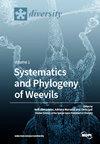收获鼠种群的长期稳定性
IF 2.1
3区 生物学
Q2 BIODIVERSITY CONSERVATION
引用次数: 0
摘要
欧亚收获鼠(Micromys minutus)是一种小型啮齿动物,生活在古北和印多马拉雅地区,在欧洲具有独特的区域物种地位,在当地的数量不规则变化。基于1975年至2022年的捕获数据和1986年至2009年的猫头鹰颗粒数据,我们分析了立陶宛(北欧)的M. minutus种群。结果表明,该物种在小型哺乳动物群落中所占比例相近,分别为1.13%和0.62%。几十年来,这一比例一直保持稳定。相对丰度为1.19±0.19只/ 1000日,在全国范围内均保持稳定。在一些调查地点观察到丰度的不规则波动。露天莎草生境、草地和沼泽的平均RA最高。洪水后洪泛区草甸绝对最高RA为88只/ 1000日。虽然栖息地人类活动的负面影响已经得到证实,但立陶宛的M. minutus不需要特别的保护措施。本文章由计算机程序翻译,如有差异,请以英文原文为准。
Long-Term Stability of Harvest Mouse Population
The Eurasian harvest mouse (Micromys minutus) is a tiny rodent of the Palearctic and Indomalayan regions, with a distinct regional species status in Europe and irregularly varying local numbers. We analysed the population of M. minutus in Lithuania (Northern Europe) based on trapping data from 1975 to 2022 and owl pellet data from 1986 to 2009. Based on both datasets, the proportion of this species in the small mammal community was similar, 1.13% and 0.62%, respectively. The proportions have remained stable across all decades. Relative abundance was 1.19 ± 0.19 individuals per 1000 trap days, stable over the long term and across the country. Irregular fluctuations in abundance were observed in some of the sites surveyed. The highest average RA was recorded in open sedge habitats, meadows and marshes. The absolute highest RA was 88 individuals per 1000 trap days in floodplain meadows after a major flood. Although the negative impact of habitat anthropogenisation has been confirmed, M. minutus does not require special conservation measures in Lithuania.
求助全文
通过发布文献求助,成功后即可免费获取论文全文。
去求助
来源期刊

Diversity-Basel
Environmental Science-Ecological Modeling
CiteScore
3.40
自引率
12.50%
发文量
925
审稿时长
11 weeks
期刊介绍:
Diversity (ISSN 1424-2818) is an international and interdisciplinary journal of science concerning diversity concept and application, diversity assessment and diversity preservation. It is focused on organismic and molecular diversity. It publishes reviews, regular research papers and short notes in the regular issues. Related news and announcements are also published. Our aim is to encourage scientists to publish their experimental and theoretical results in as much detail as possible. Therefore, there is no restriction on the length of the papers. Full experimental details must be provided so that the results can be reproduced.
 求助内容:
求助内容: 应助结果提醒方式:
应助结果提醒方式:


